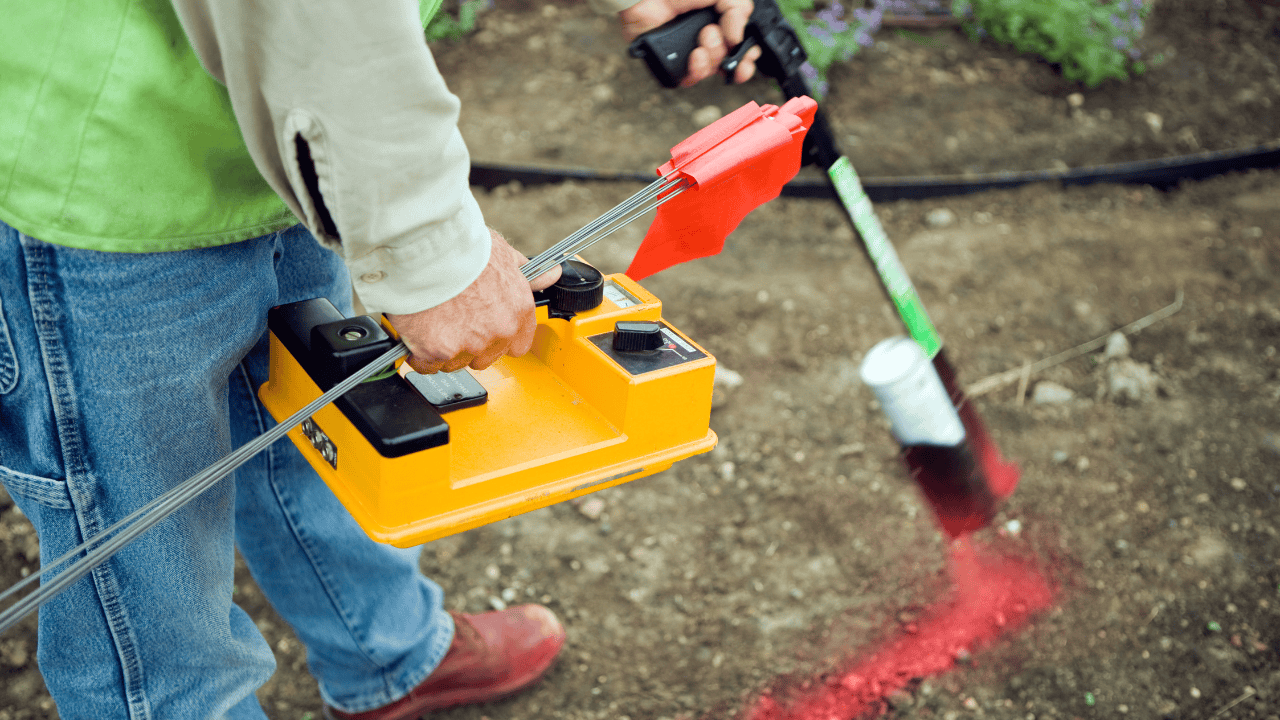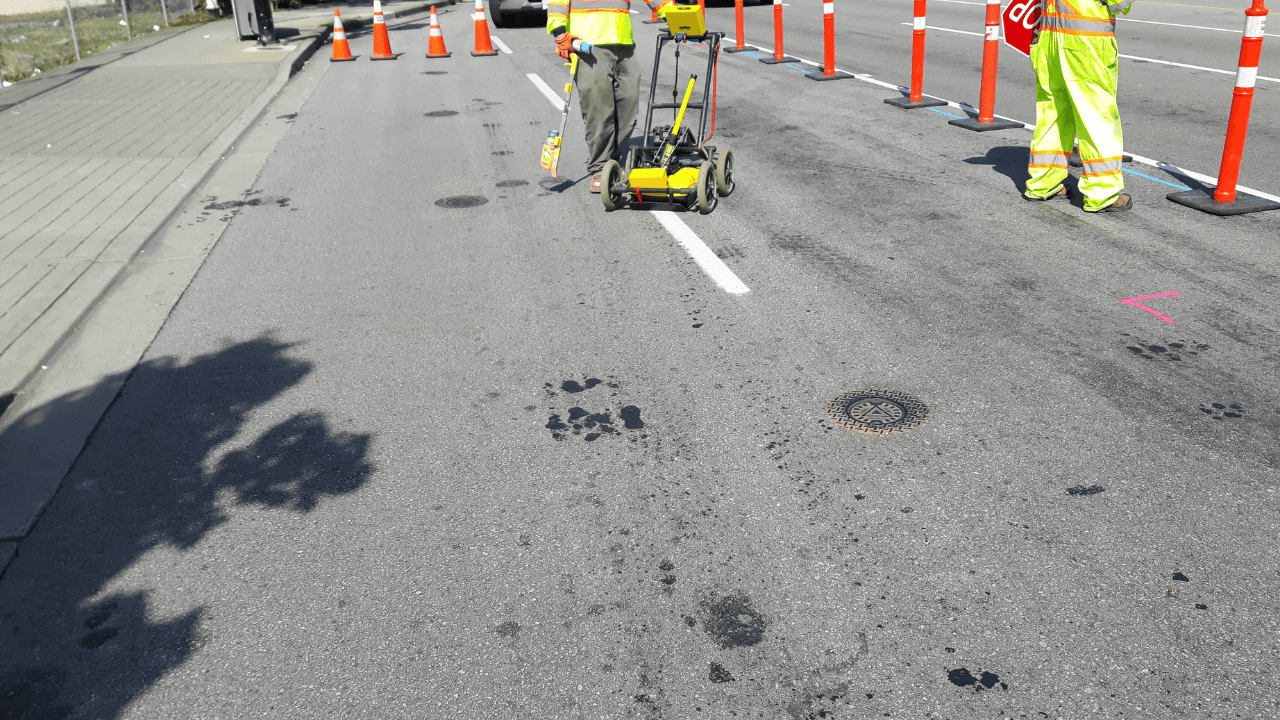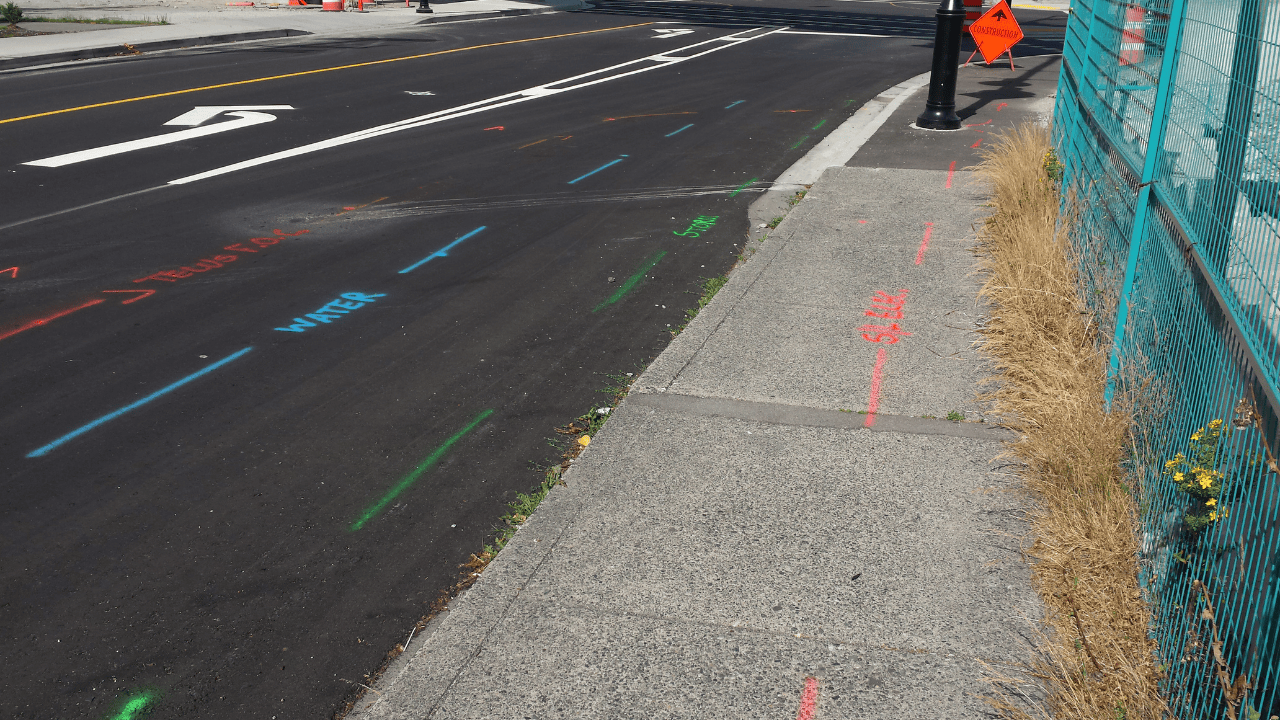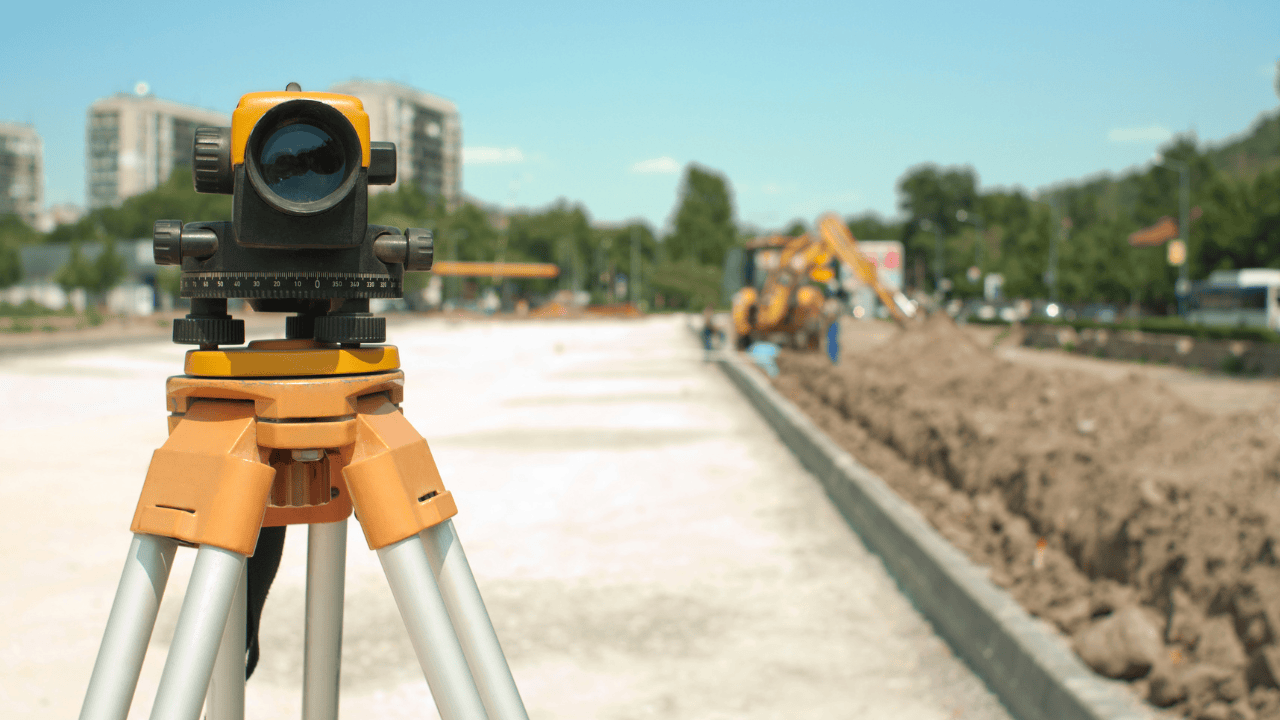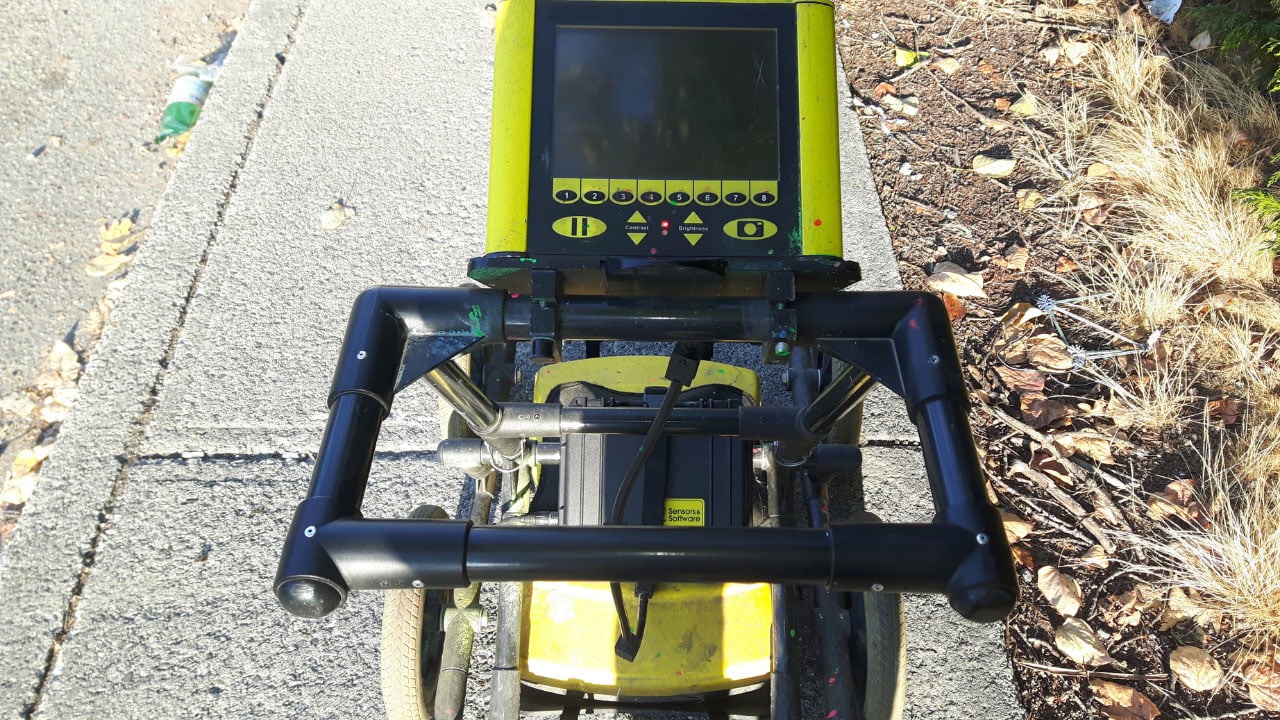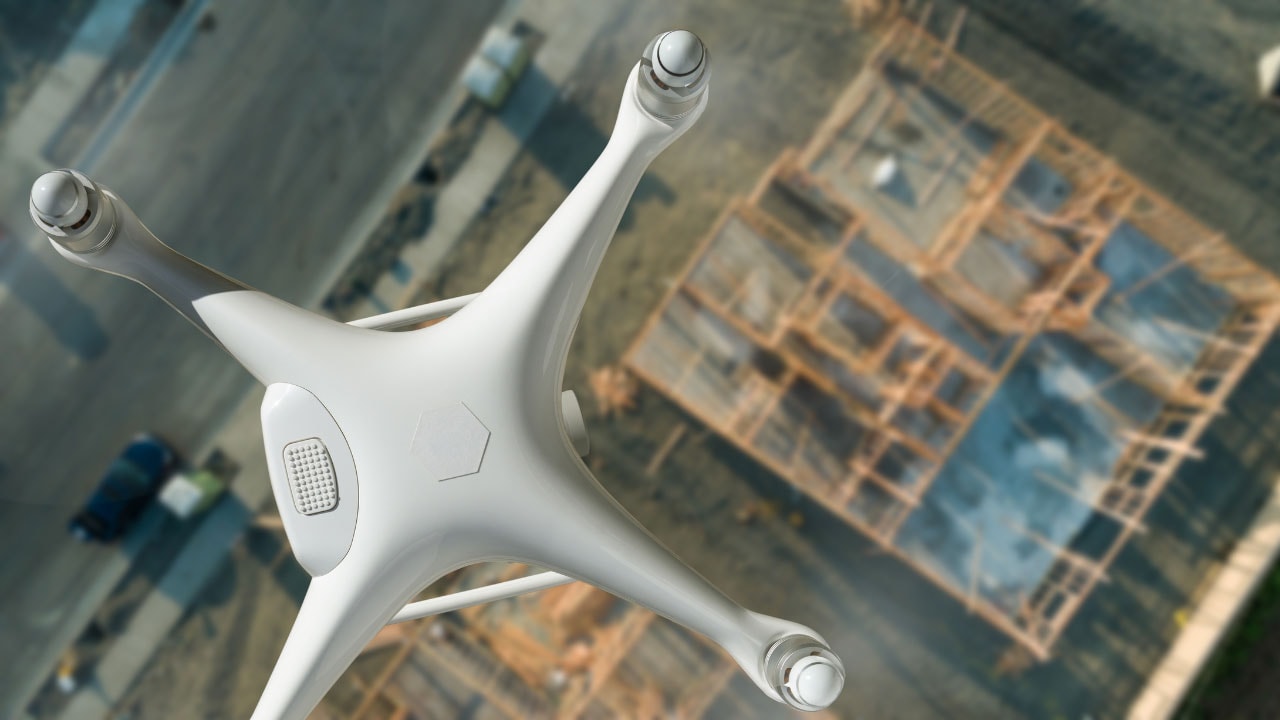Key Takeaways
- Before starting any digging or construction project, it’s crucial to locate underground utilities to avoid accidents and costly repairs.
- Major residential projects like installing fences, landscaping, building additions, and expanding driveways all need utility locating to ensure safety.
- Professional utility locating services help prevent hitting gas lines, water pipes, or electrical cables, which can lead to severe accidents and expensive repairs.
- Utility locators use advanced technology like ground-penetrating radar (GPR) and electromagnetic equipment to accurately find and mark underground utilities.
- Hiring a professional utility locating service can save you time and prevent costly mistakes by quickly and efficiently marking the location of utilities.
If you’re planning any type of digging or construction work around your home, there’s one thing you need to do before anything else, and that is to locate the underground utilities. May it be a tree plantation, building a deck, or installing a new fence, knowing what’s beneath the ground is important. Hitting a gas line, water pipe, or electrical cable can lead to serious accidents, costly repairs, and even legal trouble.
But don’t worry. Utility locating services are here to help you avoid such risks. But what exactly are these services, and when do you need them? Let’s get started.
What is Utility Locating?
Utility locating is all about finding and marking the position of underground utilities like gas, water, electric, and sewer lines. They help you know where it’s safe to dig and where you need to be careful in order to avoid any potential harm. Utility locators use various technology, tools, and expertise to pinpoint the precise location of these underground utilities.
Utility locating in California is especially important due to the densely packed infrastructure and varying terrain. That’s where it becomes crucial to understand when you might need professional expertise.
Major Projects that Need Private Utility Locating Services
Though any digging project should not proceed without the proper utility detection, however, there are few residential projects where utility locating services become the need of the hour. Here are some of the most common ones:
-
Installing a Fence or Deck
When you’re setting up a new fence or deck at your home, you’ll need to dig deep enough to place the posts securely. But before you grab that shovel, it’s important to know what’s below.
There could be gas lines, electrical cables, or water pipes in your way. Utility locators can help you avoid hitting these utilities and prevent any disruptions to your home or neighborhood.
-
Landscaping and Tree Planting
Landscaping might seem simple, but when you’re planting trees or large shrubs, you’re likely digging deeper than usual. If there’s a water main or gas line running through your yard, it could be right where you plan to plant. Using a utility locating service will help ensure you don’t hit any of these crucial lines.
-
Building an Addition or Garage
Adding an extra room or garage to your home is a big project. It often requires extensive digging for foundations, and there’s a high chance you’ll encounter underground utilities. Before any digging starts, it’s crucial to have a utility location done to avoid any potential hazards.
-
Pool Installation
Planning to install a swimming pool in your backyard? It may involve digging out a large area. With such a big project, there’s a good chance you’ll run into underground utilities. Underground utility locating services will help map out these lines, so you know where it’s safe to dig. It’s a small step that can save you from major headaches down the line.
-
Installing Sprinkler Systems
If you’re adding a sprinkler system to your yard, you’ll need to dig trenches for the pipes. Since sprinkler systems require you to dig in multiple locations across your yard, the chances of hitting a utility line are higher. Hiring a professional to handle the utility locating will help you avoid damaging any underground utilities.
-
Driveway Expansion
Expanding your driveway might appear straightforward, but it often involves more digging than you’d think. Whether you’re adding space for an extra car or simply making it wider, you’ll need to know where the utilities are. Utility locating services are crucial here to keep your project safe by avoiding any potential damage.
Hiring a Professional Utility Locating Service
You might be tempted to skip the utility locating step, especially if your project appears simple. But the truth is, you never know what’s underground until you check. Hiring a private utility locating service is a wise decision, and here’s why:
-
Accuracy and Safety
Professional utility locators have the tools and expertise to accurately locate underground utilities. They use advanced technology like ground-penetrating radar (GPR) and electromagnetic equipment to detect utilities, even if they’re not metallic. This accuracy ensures that you avoid hitting anything that could cause harm or damage.
-
Preventing Costly Mistakes
Imagine hitting a gas line while digging in your yard. The costs of repairing the damage, not to mention the potential fines and legal issues, can add up quickly. By using a utility locating service, you can prevent these costly mistakes from happening in the first place. It’s an investment that pays off by keeping your project on track and your budget intact.
-
Time-Saving
Hiring a professional can save you time in the long run. Instead of trying to guess where the utilities are or waiting for a utility company to come out, a private utility locator can quickly and efficiently mark the utilities for you. This allows you to move forward with your project without unnecessary delays.
Why Utility Locating Should Be Your First Step in Any Residential Project
In any residential project that involves digging or construction, it’s important to locate the utilities first. Whether you’re installing a fence, building an addition, or putting in a pool, knowing what’s underground will help you avoid accidents, save money, and keep your project on track.
Invest in Safety & Success: Hire a Professional Utility Locating Service
Don’t take chances with your safety or your home. If you’re planning a project, get in touch with a professional utility locating service like Util-locate today. It’s a small step that makes a big difference in ensuring your project goes smoothly and safely.

